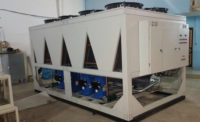Last month, this column explored the best time to functionally test new systems. This month and next month, I want to back up and talk about the best time to prepare the functional performance test procedures (or “scripts” as some people call them).
There are basically three fundamental options for this:
- During design
- Immediately following acceptance of all submittals
- As late as possible in the construction phase
Design Phase
A commissioning purist would say the functional test procedures and their acceptance criteria should be included in the contract documents along with the design drawings and specifications. This would make it clear to the contractors what testing will entail and what is required to successfully pass each test.
A realist would tell you there is almost never enough time in a traditional project design phase for the following sequence of events to occur for project-customized test procedures to be included in the bidding documents.
-
Design engineers complete their design.
-
Commissioning professional reviews the design.
-
Design engineers revise their design.
-
Commissioning professional backchecks design to confirm all commissioning comments have been addressed.
-
Commissioning professional writes customized functional performance test procedures for publication with the commissioning specification.
The sad reality is that it is rare to even get to step three before the drawings and specifications are issued for bid. Anything thereafter would need to be issued by addendum, and steps four and five would have to be completed within the confines of the bid period. Once in a while that is possible, but not often.
As commissioning becomes more and more “business as usual,” the contractual importance of having clear procedures and pass/fail criteria in the bid documents diminishes. Contractors’ complaints of being “surprised” by testing expectations ring false when most contractors have been through the commissioning process at least once.
Early Construction Phase
Waiting to customize test procedures until the equipment, systems, and controls submittals have been reviewed and approved is a more relaxed approach. This allows for facilitation of a controls integration process prior to writing the test procedures. Controls integration is invaluable for confirming that all responsible parties are on the same page regarding communications between systems and which systems are responsible for which actions.
Early construction phase test procedure development provides plenty of time for project team members, in particular the contractors whose systems will be tested, to review, ask questions, and understand the acceptance criteria. Commissioning procedures are open book tests with the answers provided. Sharing them ahead of time with the contractors should improve the chances of the functional tests passing the first time around.
This timing significantly reduces the risk of needing to revise test procedures if the approved submittals are different from, or more detailed than, the design documents. This is the case for about 100% of all projects, so commissioning fees should be lower if the commissioning professional is not expected to customize test procedures until early construction.
Next month, we will look at the pros and cons of waiting as long as possible before preparing the test procedures late in the construction phase.




